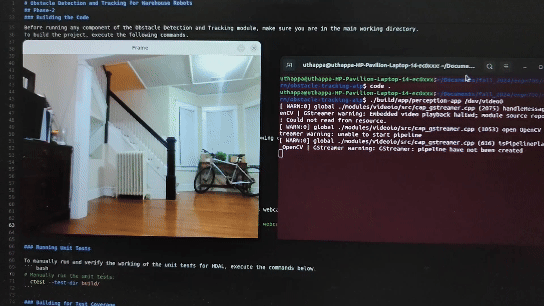Obstacle Detection and Tracking for Warehouse Robots
Project Overview
This project focuses on developing a human obstacle detection and tracking system for warehouse robots. The system enables robots to detect and track multiple humans within their operational range using a monocular video camera, ensuring safe and efficient navigation in warehouse environments. The detected positional information is mapped into the robot’s reference frame, allowing it to adjust its path dynamically to avoid collisions.
Languages & Tech stack
- C++ for implementation.
- OpenCV for image processing.
- ONNX for machine learning model interoperability.
- Git for version control.
- Github Actions for continuous integration
Methodology
The project follows an Agile Iterative Process (AIP), incorporating best practices in software engineering:
- Agile Development Process (AIP)
- Iterative approach for continuous improvement.
- Weekly sprint cycles to track progress.
- Sprint Planning & Execution
- Scrum-based sprint methodology, ensuring frequent updates and improvements.
- Sprint discussions and reviews are documented.
- Test-Driven Development (TDD)
- Unit tests are implemented before feature development to ensure reliability.
- Automated testing pipeline integrated via GitHub Actions.
- Pair Programming & Code Reviews
- Driver-navigator pair programming to improve code quality and knowledge sharing.
- Software Architecture & UML Design
- Well-defined UML class and activity diagrams for structured development.
Key Features
- Obstacle Detection: Computer vision to detect humans in the robot’s workspace.
- Real-Time Tracking: Continuously tracks detected humans and updates their positions in the robot’s reference frame.
Project Demo
